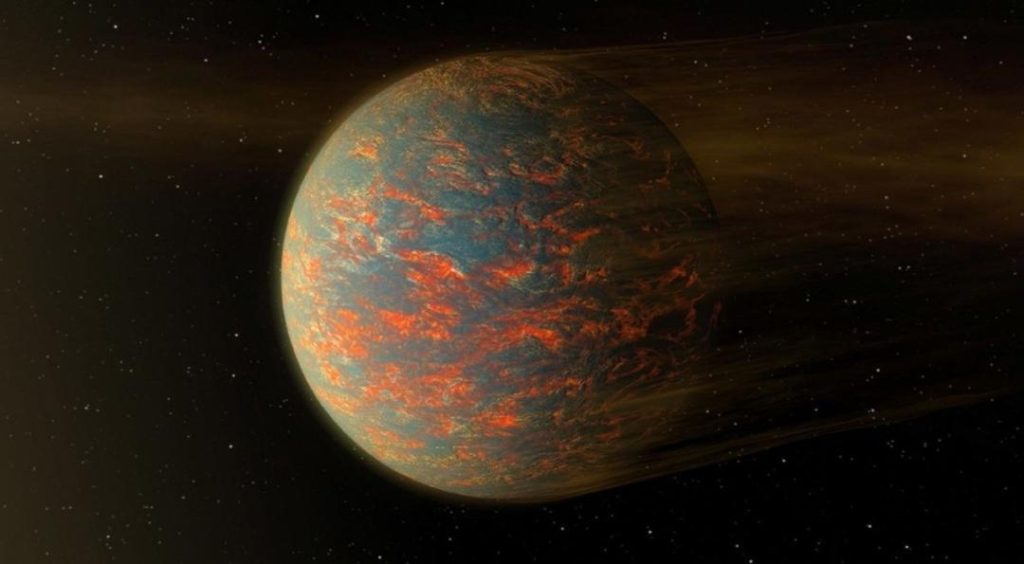
Newly-Discovered Super-Earth Heats Up & Freezes Every 300 Days
In a groundbreaking discovery, astronomers have uncovered a new exoplanet that is unlike any other known to date. The newly-discovered “super-Earth” is orbiting a Sun-like star just 20 light-years from Earth, and its unique orbit takes it on a wild ride of extreme temperatures, switching between scorching heat and freezing cold every 300 days.
The planet, which is classified as a “super-Earth” due to its size being larger than that of our own planet but smaller than the gas giants Neptune and Uranus, is a fascinating find in the world of astronomy. The discovery was made by a team of scientists using a combination of space-based and ground-based telescopes, and the results were announced in a recent publication.
According to the findings, the super-Earth, which has been given the provisional designation TOI-1338 b, orbits its star in an oval shape, rather than a circular path like our own planet. This unique orbit is the key to its extreme temperature fluctuations.
When the planet is at its closest point to the star, it basks in the intense heat, with surface temperatures reaching as high as 400°F (200°C). This is hot enough to melt metal, and it’s likely that the planet’s surface is covered in a thick layer of molten rock.
However, as the planet moves further away from the star, it experiences a rapid cooling, with temperatures plummeting to as low as -300°F (-175°C). This is cold enough to freeze water, and it’s likely that the planet’s surface is covered in a thick layer of ice.
This extreme temperature fluctuations are a result of the planet’s unique orbit, which takes it from a point where it receives intense heat from the star to a point where it is much farther away and receives very little heat. This means that the planet experiences a dramatic change in temperature every 300 days, which is roughly the time it takes for the planet to complete one orbit around the star.
The discovery of TOI-1338 b is an exciting find for astronomers, as it provides insight into the types of planets that can exist in our universe. The fact that this planet is able to experience such extreme temperature fluctuations suggests that there may be other planets out there that are capable of hosting life, despite the harsh conditions.
“This discovery is incredibly exciting, as it shows that there are planets out there that are capable of hosting life, even if the conditions are extreme,” said Dr. Lisa Kaltenegger, an astronomer at the Max Planck Institute for Astronomy. “The fact that this planet is able to experience such dramatic temperature fluctuations suggests that there may be other planets out there that are capable of hosting life, despite the harsh conditions.”
The discovery of TOI-1338 b was made using a combination of space-based telescopes, including NASA’s Transiting Exoplanet Survey Satellite (TESS) and the European Space Agency’s Gaia spacecraft. The data collected by these telescopes was then analyzed using computer simulations and other tools to determine the properties of the planet.
The discovery of TOI-1338 b is a reminder of the vast diversity of planets that exist in our universe, and the many exciting discoveries that are still waiting to be made. As astronomers continue to study this planet and others like it, we may learn more about the types of life that can exist on other planets, and the conditions that are necessary for life to thrive.
Source:






